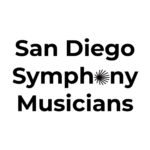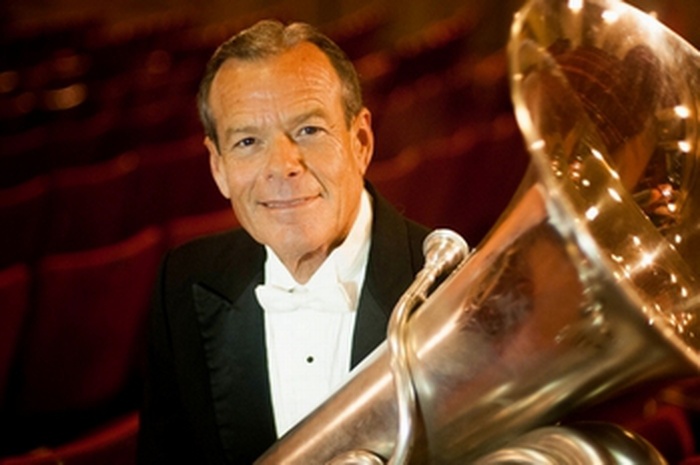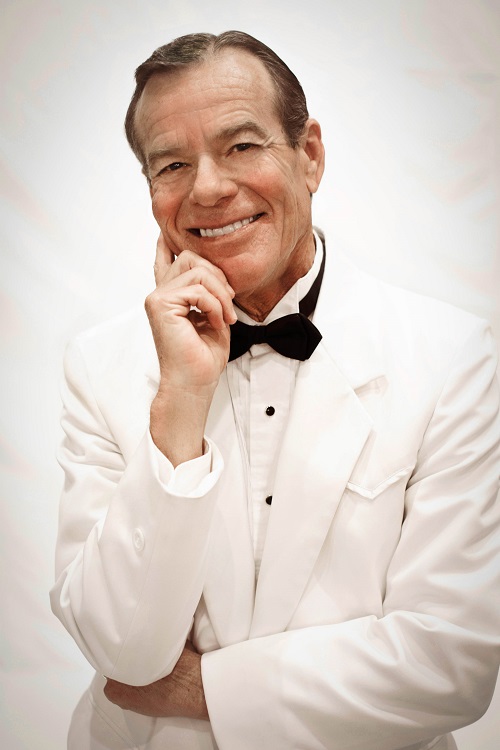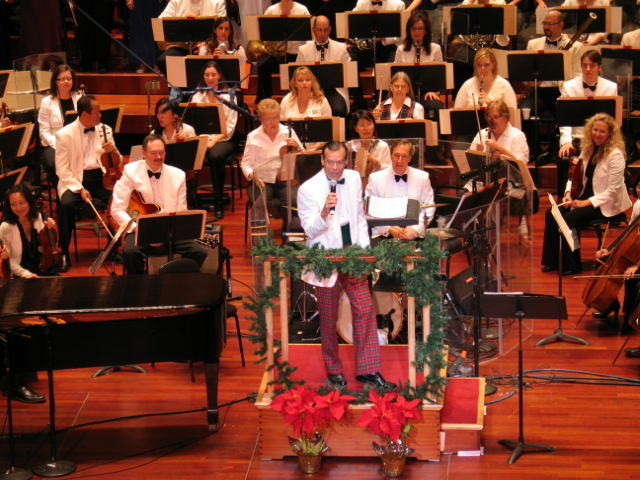“I love it and I love what I was doing and that was why I did it,
always because I loved it and I thought it was really neat.”
-Matthew Garbutt
In 1956 the parents of a joyful, eager little 5 year old took their only child, Matthew Garbutt, to the KTLA soundstage in Los Angeles to see a taping of his all-time favorite show, Polka Parade. After the show Matt was so giddy with excitement his parents took him up to the bandstand to meet live musicians for the very first time. “Would you like to try?” asked the tuba player. “Yes!!” exclaimed Matt. He demonstrated, Matthew tried, a spark had been ignited and a lifelong love for tuba began.
The Beginning
Matt started playing tuba in the band at San Jose Elementary School when he was ten years old. Three years later, he joined the San Fernando Valley Youth Band as the principal Tubist. Rehearsals took place at C&D Music, a little shop in the valley on Sepulveda Blvd. The owner, Claude Lakey, was not only the conductor of the band, he was a professional trumpet player and saxophonist that played with the Glenn Miller Band. Mr. Lakey continually encouraged students to conduct the junior band. At the young age of 14, Matt decided to take Mr. Lakey up on his offer and conducted the Junior band, The Claudehoppers, for the first time. Another spark had been ignited.
Aside from playing tuba with the Sr. band and conducting the Jr. band, Matt also played in the Jr. Philharmonic Orchestra of California. Since Mr. Lakey knew Matt was playing classical music in an orchestra, he would often have Matt conduct note for note arrangements of major orchestra repertoire such as the 4th movement of Tchaikovsky’s Symphony No. 4, pieces from Wagner’s Lohengrin and the final movement of Schostakovich Symphony No. 5 with the Jr. band.
Matt received weekly private lessons from Mr. Ed Low, a professional trumpet player during this time. Within a year Mr. Low told Matt that he was advancing so quickly that he needed to learn from a real tuba teacher. At this point he was introduced to a man that would forever impact the rest of his musical career,
Tommy Johnson.
Tommy was the first call tubist in the Hollywood studios. Though he was busy recording on hundreds of movie soundtracks and musician’s albums, he also took the time to teach and mentor young musicians from Los Angeles Unified School District, USC and UCLA. “Tommy was a major life influence as a player, teacher, man and human”.
Tommy would prepare, teach, and open musical doors for 14 year old Matt over the course of several years. Matt’s first big break happened when Tommy handed over his coveted union brass choir gig at the First Baptist Church of Van Nuys. Every Sunday 6,500 people would come to worship and hear the famous religious Irish tenor sing with a full orchestra during three different services. “The band was filled with studio musicians that would create top notch brass arrangements for us to play.”
During a weekly lesson, Tommy received a phone call from the principal trombonist of the Utah Symphony asking if Matt would be interested in attending the Music Academy of the West on full scholarship. This would be the first of 5 years playing in Santa Barbara’s acclaimed summer festival from 1968 -1972.
The Music Academy Orchestra always started with several days of reading through music. When it came time to set the repertoire for the first concert, the conductor, Maurice Abravanel, took Matt for a walk in the rose garden and said “Mr. Garbutt, I want to program the Pictures at an Exhibition by Mussorgksy. Do you know the piece? It’s got a very difficult tuba solo. Do you think you would be able to do it?” Matt spoke to Tommy for guidance, he believed Matt was ready to play this difficult solo and even offered him his special small tuba to play for the occasion. This would be Matt’s first time playing “Bydlo” which is often played on euphonium by a trombonist today. On the final concert of Matt’s last year at the Academy, he played the Vaughan Williams Tuba concerto with the orchestra. A couple of years later he would go on to play this same tuba Concerto with the Pasadena Symphony.
Matt was able to hone both his tuba and conducting skills in high school. The head of the music program, Mr. Sheldon Mehr, “was a super good band director and teacher. He could also see that I was interested in conducting and starting to really super go as a musician. My Senior year in high school Mr. Mehr pulled me into the office and said, ‘I want to take 35-40 kids to make the best wind ensemble of players. The remaining 65-70 kids will be placed in the concert band. I want you to conduct the concert band for the rest of the school year’. I got to pick the pieces, create concert programs, rehearse the students and conduct the concerts.”
After high School, Matt stayed in Los Angeles to attend California State University, Northridge. During his only year there he pursued conducting as well as tuba. His conducting teacher, Larry Christiansen, had been the principal horn player with the San Diego Symphony in the late 50’s and 60’s. “He was a major influence for my conducting technique. He taught me how to do stuff that helps the orchestra instead of being counterproductive.”
The following year, in 1970, Matt decided to study at California Institute of the Arts (Cal Arts). The new campus in Valencia was still under construction when school was to begin so Matt’s sophomore year would be spent in a temporary location at an abandoned Catholic girls school in the side of a hill in
Burbank. Musicians from the Los Angeles Philharmonic taught the brass students and conducted brass ensembles, quartets, quintets and chamber orchestra. Unexpectedly, in February of 1971, the big earthquake hit and the old Italian buildings collapsed; School was cancelled for the rest of the semester.
Time Abroad
With school placed on hold and burning out from gigs around Los Angeles, Matt decided to switch things up and study in Europe. The University of Music and Performing Arts in Vienna was quick to respond with a substantial scholarship so 20 year old Matt spent his Junior year abroad studying tuba.
“We did nothing except study the tuba parts of the Wagner’s Ring of the Nibelung (commonly known as the Ring Cycle). Yes, we could play all the concerti and high parts, but these were the real test as a tuba player.”
There would be no conducting for Matt while in Vienna. A conducting degree would require a 7 year commitment that would garner him a job with a minor opera company or symphony upon completion. Being fluent in German was another prerequisite that would add an additional year to his studies, as a result, in an effort to pursue both of his passions, Matt returned to the states upon completion of the school year to attend Indiana University.
At IU Matt would study tuba with Harvey Phillips and receive a life changing phone call from the “Los Angeles Philharmonic tubist, Roger Bobo: ’Zubin Mehta is looking for a Principal Tuba player for the Israel Philharmonic, would you be interested in auditioning’?” Matt was flown to New York City to play a private audition on stage at Carnegie Hall for the Maestro himself.
When it came time to warm up Matt discovered something important had been left in Indiana. “Maestro, my music was left in Indiana. I can play anything though, what would you like to hear?” For nearly an hour, Maestro Mehta would proceed to call out various excerpts and Matt would proceed to play his heart out. Zubin’s last request was to hear, Bydlo. Without the proper tuba in tow the audition process was ended. “Ok. I really like your playing. I’d like for you to play for me in LA with Roger Bobo.”
21 year old Matt brought his big tuba, regular tuba, small tuba and music to LA for his second audition. It went well, Mr. Mehta offered him the job. “You are a really good tuba player. I want to show you off and I want everyone to know I made the right decision, so I want you to cut your hair so people will take you seriously”. This was the last time Matt’s hair would touch the middle of his back. Playing with Israel Phil gave Matt the opportunity to meet some of the world’s longstanding leading conductors. One of his all time favorites had been the music director of the Chicago Symphony, Royal Opera in Covent Garden and the Bavarian Radio Symphony Orchestra, Rafael Kubelík. “He was an Inspirational conductor. He had a keen attention to detail, stayed out of the way and made everyone love the music.”
During his three years in Israel Philharmonic Matt played hundreds of fulfilling concerts, went on tour six times and even conducted the orchestra once (Brahms Symphony No. 2). After Matt’s final concert during his last tour, Matt would have a conversation with Mr. Mehta letting him know that he would be leaving Israel Philharmonic so he could conduct. Though the maestro was disappointed and thought he was a fool for leaving, Matt followed his heart back to California in hopes of fulfilling his dreams.
Life in San Diego
Venice Beach became Matt’s home for a few months in 1976. He found himself driving south often to visit his long-time friends Jerry Folsom, Mark Bedell and George Johnston from his Music Academy and Northridge days. They all held positions in the brass section of the San Diego Symphony. When a tuba opening occurred in the San Diego Opera Orchestra Matt took the audition and won. The following year, September 1977, he auditioned against nearly 40 tuba players and won his job with San Diego Symphony.
Early on, the music director, Peter Erös, saw Matt conduct a brass ensemble at a wedding in town and immediately took notice. “He pulled me aside and told me, ‘You got it! I would like to help you with your conducting’.” Soon after, the assistant conductor fell ill and Matt was called to stand in. Various other conducting opportunities arose with the San Diego Symphony and before you know it, Matt was named the Conducting Assistant under the direction of the following music director, David Atherton. In 1980 Matt would not only be the principal tuba of the orchestra, but the full time Summer Pops conductor as well.
During the first 10 week summer season at Hospitality Point Matt would be responsible for programming and conducting 9 weeks of programs with zero budget for soloists. The orchestra was the star of the show. Programs were compiled with music he felt would connect the audience to the orchestra. “Yes, some of the programs were a bit hokey, but it was music I would like and the arrangements came off the record so they were endearing to everyone.” Programs consisted of: Americana night, Gershwin night, Pops around the world, Movie music, salute to Rogers and Hammerstein, Pops on the March and the ever so popular 1812 Overture by Tchaikovsky. Fireworks would end each show. “When I needed to come up with a first half for Burt Bacharach’s concert, I knew Burt really liked to go to the Del Mar races, so I decided to program the first half to be dedicated to ponies and horses like the William Tell Overture and Light Calvary Overture, etc.”
Matthew also became the conductor for the Holiday Pops concerts, “I did it for the good of music and the good of the orchestra here in town so music would stay really popular and everybody would want to see it.” The joy Matthew brought on the podium was contagious. During the early years Matt became so synonymous with the Holiday Pops that ornaments were handed out to audience members with the image of him conducting under Santa’s sleigh. “I love Matthew’’ buttons and mugs with his name and image could be purchased in the symphony shop as well.
“What was so amazing about working with the San Diego Symphony as a conductor was nobody told me what to do. I was able to work with everyone’s ideas and create everything fresh every single time. We never purchased packaged acts for Young People’s concerts and pops concerts. It was more important for us to create our own curriculum and programs.”
During Matt’s 44 years with the San Diego Symphony incredible memories are bountiful. “One of my favorite, most memorable experiences at the pops was the very first summer I conducted at Hospitality Point. For the final concert we ended with the 1812 Overture. Unbeknownst to me, the stage crew, whom I got along with really well, put the podium on a scissor lift. Before the concert they said, ‘Matt, we’ve got something very special planned for you, don’t worry you won’t get hurt’. When the cannons started going off at the end the piece the podium raised up slowly ending 15 feet high in the air as I was conducting.
Another favorite was conducting the National Anthem at the stadium where the Padres played for the world series in 1998. There were so many incredible experiences through all of it. With so many different acts and traveling groups the San Diego Symphony was always highly regarded. To this day I have a
great little message from Kenny G saved on my voicemail.”
One of Matt’s favorite and most challenging playing experiences occurred in 1993 when the principal horn, John Lorge, wrote a 27 minute, 4 movement concerto (Fantasy for Tuba and Orchestra) for Matt to perform in concert with the San Diego Symphony.
“Being the only tuba player in the orchestra is great. I wouldn’t have it any other way. It’s really fun being the bass of the orchestra. At rehearsal I didn’t have to worry about so many notes to play so I had time to pay attention to what everybody else was doing all the time. That’s how I was able to move into a conductor role so easily. I was very very fortunate and I’ve been really really really lucky to be able to do it all. I got to conduct practically everything I wanted to. Many many fun things. It’s been good.”
“I feel wonderful about retiring. It’s been 60 years that I’ve been committed to playing the tuba. I was so fortunate that not only did I have a good tuba job, but was able to conduct as well. Having those responsibilities fit me really well. Kayrl, my wife of 40 years, knows because she helped me stay on track all the time. She was there to help with the many blind spots in my life.” Kayrl looks at Matt endearingly, “Zubin would have been happy to know that you played tuba the whole time.”
We love you, Matthew Garbutt. Your enthusiasm, honest joy, solid tuba tones, conducting and plaid holiday pants will forever be a part of the San Diego Symphony legacy.
Matt’s final concert with the San Diego Symphony was the Enigma Variations, the same piece he played on his first concert with the Israel Philharmonic.
By Susan Wulff
Associate Principal Bass




